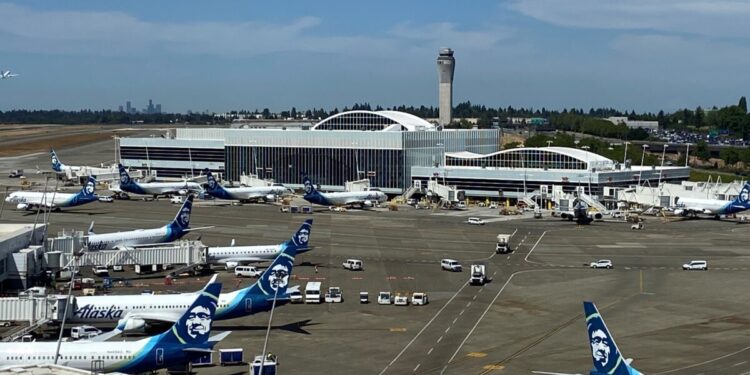Seattle-Tacoma International Airport has been approved for a group of expansion projects that include a new terminal.
The Federal Aviation Administration completed and approved a Federal Environmental Assessment for the 31 proposed plans, the Port of Seattle announced.
Included in the 31 approved projects are a second terminal with 19 new gates, a ground transportation center, off-site cargo facilities, extensions of airfield taxiways, and an expansion of the fuel facility in preparation for future fuel needs.
A specific goal of the project is to accommodate increasing passenger demand of 56 million individuals and cargo through 2032. These projects are expected to be completed or under construction by 2032.
The Port of Seattle noted the approval is one step in a continued effort to evaluate all 31 projects. The Port of Seattle will now lead the environmental review of the proposed investments, with an expected public comment period in 2026.
Capacity issues dating back to 2019 have caused long TSA wait times and travelers standing in lines that stretched as far as the airport’s parking lots.
“I think we’ve outgrown this airport,” said Herbert Edwards, a longtime traveler through SEA.
The managing director at SEA, Lance Lyttle, previously stated his concerns about overcrowding in 2023. “If you come to the airport any time during peak, especially during the summer, you’ll see lines going outside the building,” Lyttle said.
A survey from the consumer research firm J.D. Power ranked SEA as the 17th mega airport, 33 million passengers or more each year, out of 20 total airports. The study conducted surveys of 30,000 airport passengers between July 2024 and July 2025.
SEA tallied a below-average customer experience rating for the eighth straight year, according to J.D. Power. While the airport’s overall service and timeliness of flights received positive feedback, SEA received the most criticism regarding its issues with overcapacity.
Popular airliner Delta announced it will add more service to Seattle with a daily nonstop route between Seattle and Philadelphia.
“Philadelphia has been a top-requested destination from our Seattle corporate customers, and this new service reflects our commitment to investing in the routes that matter most to them while building an even stronger network from the Pacific Northwest,” said Amy Martin, Vice President of Network Planning at Delta Air Lines.
The changes are expected to be implemented on May 7, 2026. “Seattle continues to be one of Delta’s most important coastal gateways, connecting customers to key business and leisure destinations across the country and around the world,” Martin said.
The second terminal with 19 gates represents SEA’s most significant expansion since the International Arrivals Facility opened in 2021, addressing chronic overcrowding that has plagued the airport for years as passenger volumes exceeded original design capacity.
The 56 million passenger target by 2032 reflects SEA’s continued growth as a major West Coast hub, particularly for Alaska Airlines and Delta, with increasing international service to Asia and Europe driving demand beyond domestic travel patterns.
The 2026 public comment period will allow community input on environmental impacts including noise, air quality, and ground transportation effects on surrounding neighborhoods, a critical phase given historical tensions between airport expansion and residential concerns.
SEA’s eight consecutive years of below-average J.D. Power ratings demonstrate that infrastructure expansion has lagged behind passenger growth, creating bottlenecks at security checkpoints, baggage claim, and gate areas that frustrate travelers.
The ground transportation center addresses the chaotic rideshare and taxi pickup situation that has become notorious at SEA, where passengers often wait in crowded outdoor areas with inadequate shelter and confusing signage.







